Lin-Manuel Miranda's List of Anti-Villains
- sophiegalley11
- Feb 2, 2022
- 17 min read
While he was a well-known figure in the musical theater community before his magnum opus debut, Lin-Manuel Miranda rose to mainstream stardom thanks to his Broadway hit Hamilton: An American Musical. Today, the musical has grossed around $6.5 million and that number is bound to increase, especially as it’s still running to this day. As someone who has been an audience member, a cast member, and a crew member in musical theater, I have a deep connection to the genre. I love watching it and performing in it, but I am not tapped into its mainline. I’ll go to shows that interest me now and again, but what pulls me into attending is hearing a piece of a number from the musical or hearing about it from others. I suppose you could call me the casual musical theater nerd. So, when Hamilton began it’s ascension into the spotlight, I actually didn’t jump on the hype train like everyone else did. I had heard of it, but it never caught my interest enough to really want to see it. Besides, I was too focused on high school to really pay attention to that stuff…that is until my senior year.
“You’ll be Back,” King Henry’s titular song from the musical, was used in a Youtube video that I really enjoyed during my last year of high school. Immediately after hearing the song, I found out it was from the famous Hamilton everyone had been talking about. After being forced to hear Jonathan Groff’’s voice sing the same lyrics over and over again, my parents decided to gift me two tickets to see the musical as my graduation present, and watching it with my best friend was one of the highlights of my summer before college. The music was amazing, the choreography was stellar, the acting was on point, and that rotating circle platform elevated the performance to another level. However, as we were collecting our things to leave the theater, a nagging thought tugged at my mind: “Who is the villain? Who exactly were we, as audience members, supposed to be completely against?” Of course, not all stories need an absolute villain or a character for the protagonist to be in opposition of, but there were so many characters and confrontations that it felt as if one of them had to be the villain of the story. My naivete at that time had made me forget the words sung by one Aaron Burr: “Now I’m the villain in your history” (“Leslie). This line alone would make anyone point to Aaron as the “Big Bad” and while that is a fair conclusion to make, he isn’t really that bad of a person when you think about it. Heck, Hamilton isn’t that good of a person either. When people look past all the glamor and catchy songs and instead, pay attention to the story and the characters’ progression over the course of the performance, that fact becomes as plain as day. So, Lin-Manuel Miranda decided to make Hamilton a show where the characters are morally gray (except maybe King Henry, but he doesn’t stick around too long anyways). I really enjoyed this as part of the show’s story, but surely Lin varies his antagonists a bit more in his other works, right? A good full-on villain is another antagonist people love, sometimes even more than those who are morally gray.
It has been 7 years since Hamilton first premiered on Broadway and I can tell you one thing: Lin’s morally gray antagonists continue to this day. Whether he is the creator of the whole production or one of its important puzzle pieces, Lin-Manuel Miranda can’t seem to break away from morally gray antagonists and in fact, these antagonists can be given another label that many people have likely never heard before; they are all Lin’s anti-villains.
Taking You Back to Elementary and Middle School English Class
Let me be honest right out of the gate: I’ve only seen a total of four of Lin-Manuel Miranda’s projects: Hamilton (both the on stage production and the Disney+ version), Moana, In the Heights (only the movie version), and Encanto. Two of them he was the creator for (Hamilton and In the Heights) and two he had a hand in the music for (Moana and Encanto). For this reason, I cannot say with certainty that his tendency to create morally ambiguous antagonists can be seen in every production he is a part of. This is just a pattern I noticed with the four I have seen. You know what they say, “Twice is a coincidence, three is a pattern.” So what does that make four? A purposeful act? …Probably not, but I think it is interesting that this trope for antagonists is one he seems to follow with not only the shows he creates, but also the productions he is a part of. Speaking of antagonists, that’s probably a term you haven’t heard since your younger years, so let’s take a trip back in time to your English class to remind you the definitions of all these vocab words.
While there are many popular media and literary tropes that people may recognize by name, they may not truly understand their definitions. The protagonist and antagonist, for example, are very well-known tropes by name in literary and media communities, but their actual meanings may surprise you. The protagonist is the character in the story that we would also call the “main character” as it is from their perspective that we are seeing the world of the story. While many would assume the protagonist is the one on the side of “good,” that is not necessarily the case. A protagonist is someone that an audience simply follows over the course of the story, whether they are “good” or “bad” is up to the creator. A similar idea can be seen in the antagonist. The antagonist is defined as the character who opposes the protagonist in some way or another, whether that be physically, morally, psychologically, or the like. However, antagonists do not always have to be “evil” but are simply the protagonist’s obstacle. Within these spheres are two other very recognizable tropes, the hero and the villain. The hero is someone who is seen as on the side of “good,” is celebrated for many for their achievements, and is typically casted for the role of protagonist. On the other side of the coin is the villain whose actions benefit those on the side of “evil,” who many looked down upon, and who is typically casted as the antagonist. While the definition of hero and villain can be played around with between creators, the definitions of protagonist and antagonists are very much set in stone.
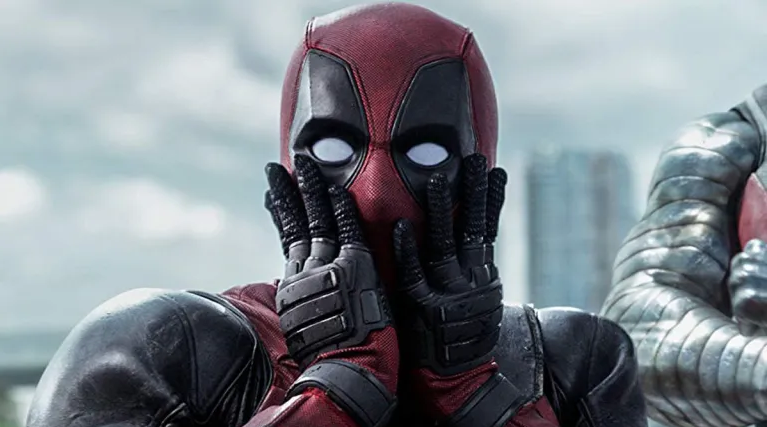
Becoming more popular and mainstream in recent years, the anti-hero is a trope that many have already come to know. Characters like Deadpool and Jack Sparrow are known and beloved as anti-heroes, but some may not truly understand the intricacies of that title. An anti-hero is a character that is flawed but will ultimately do the right thing in the end, whether that be because it aligns with their own goals, they will receive something they want in return, they still have some good left in them, or any combination of those three reasons. What many like about anti-heroes is that, because they are flawed, they are more like us: not perfect, dealing with their own struggles that heroes just don’t seem to deal with, and growing through their experiences that (hopefully) makes them a better person in the end. Because of this allure of relatability, it is more clear as to why anti-heroes get lots of love whereas anti-villains get very little to the point where this technical term is rarely discussed.
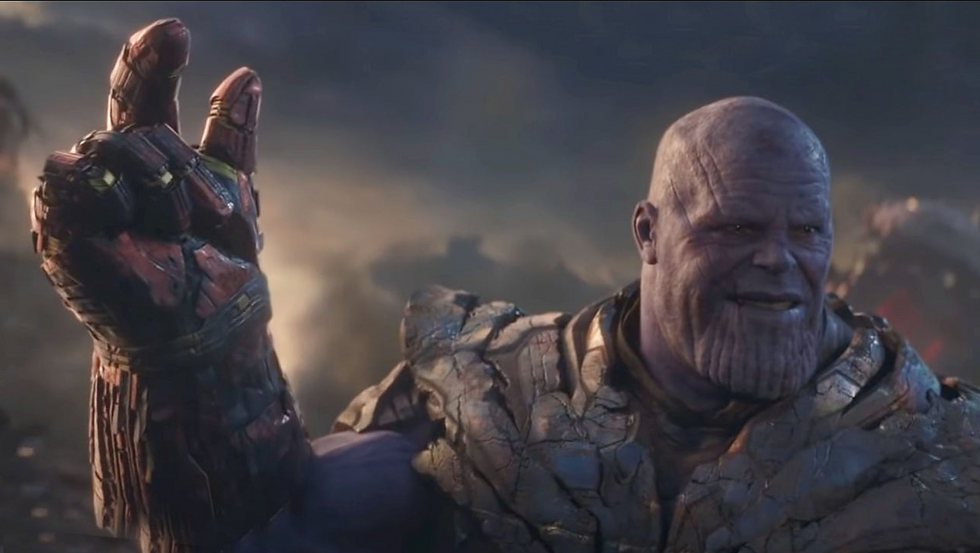
When I realized this pattern amongst Lin’s works, I had no idea that anti-villains are even a trope or how they worked within a story, but I couldn’t describe his “antagonistic” characters in any other way. After some research, I learned that anti-villains, in basic terms, are usually those whose goals were made with good intentions, but their actions towards reaching that goal were skewed. They have a certain point of view that they see as “good” when really it is ultimately more damaging and they choose to ignore or attack those who oppose their viewpoint. One very well-known example of this trope is Thanos from the Marvel Universe. In his eyes, preventing the destruction of the universe by snapping out half of existence is a noble and just cause. In response, most fans considered Thanos in no high regard and saw his deeds as deplorable.

While this may not be true of all anti-villains, it seems that, in most cases, there are few who find anti-villains enjoyable. This is fascinating considering that sometimes a “villain” in a story can become more popular than their hero counterpart. Take Hades from Disney’s Hercules for example. Hades is a very well beloved character and I believe that much of that comes from his personality. He is very witty and fun despite his evil deeds and motives. In my opinion, I believe what makes anti-villains disliked (sometimes even more than villains) is that some refuse or are unable to see the harm they are doing in their actions even when others inform them of their misdeeds. Fans become angered when anti-villains refuse to see the damage they have caused or become frustrated that the anti-villain cannot even see, experience, or understand that damage they are creating. When it comes to how they change over the course of their stories, some anti-villains are given arcs where they come to the realization that what they have been doing is wrong, some experience the repercussions of their actions, and others do not change, continuing their terrible actions and refusing to see the dark side in them.
While these are elements of anti-villains that I have noticed, there are actually four different types of anti-villains recognized in tropes according to an article on Masterclass titled “Anti-Villains: Definition and Examples of Anti-Villain Tropes.” Unfortunately, there is no name for each trope which makes things a bit more irritating for me, because they are all slightly similar to each other. I have made an attempt to explain each and their differences, while also providing examples so they can be more easily understood. In addition, I have created my own labels for each type since I will be talking more about them throughout the article. Re-explaining them over and over will get grating and confusing so hopefully, these names will help in the understanding of my blog post.
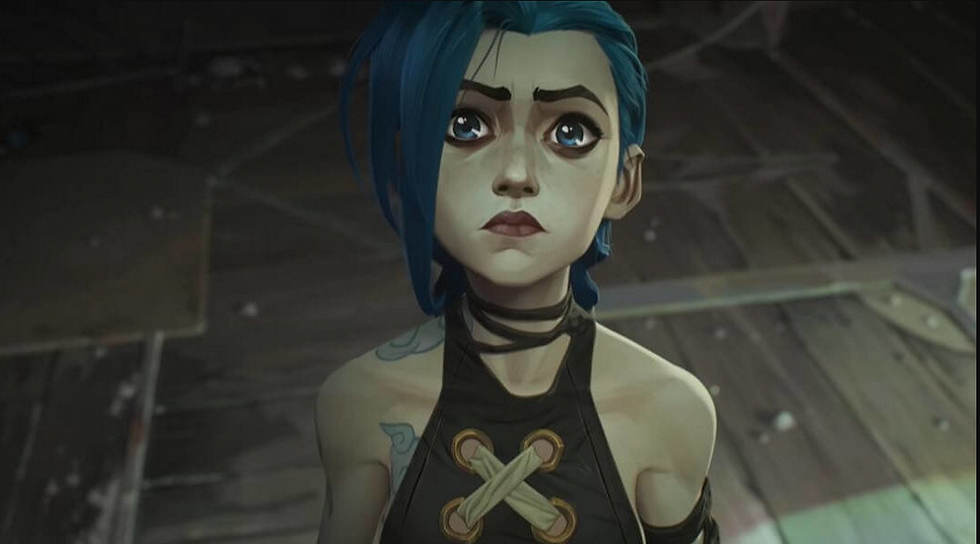
Let’s start with the very first type of anti-villain that I called “Good Turned Bad.” This character begins their story as someone “good,” but over the course of the story, becomes “evil.” Imagine a good person pushed to the brink. An example that comes to my mind when I think of this type is Jinx from Arcane. Jinx was just a child who was trying to do the right thing, but her actions killed instead of saved the people she loved. It is that one moment changed her from a good kid to someone who would hurt others without a bat of an eye.
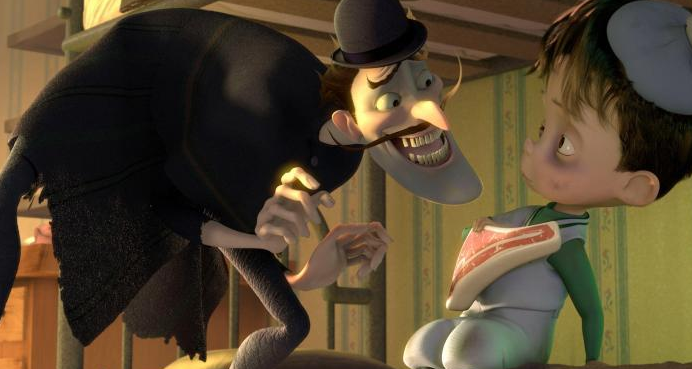
“The Sympathzee” anti-villain is one that has some similarities to “Good Turned Bad.” This is a character who was dealing with very serious and terrible struggles throughout their life that led them to becoming this way. An example of this type of anti-villain is Goob from Meet the Robinsons. At the beginning of his story, he is just a kid who wants to be adopted. He has to deal with Lewis keeping him up all night and eventually, he ruins Goob’s chances at his baseball dreams. Because of these mounting stresses, Goob turns to evil to take revenge on Lewis. The key difference between “The Sympathzee” and “Good Turned Bad” is that a single horrible moment will likely be all that it takes to create the latter but the former is built up over many terrible instances. In fact, if “the Sympathzee” executed their goals in a better way, they would have likely been rooted for the audience as heroes or protagonists. Instead, the audience feels an emotional pain when they see this character on screen, because they know the dreadful things that have happened to them.
Out of all the kinds of anti-villains, “The Believer” is the one where many audience members are more likely to turn on rather than feel for their situation. This character believes that they are doing the right thing but in actuality, are doing more harm than good. This could start from a place of innocence where the goal in basic terms seems good but their intentions become warped over time. They could also simply not realize how severe their actions are on others or they could ignore the pain they are inflicting. An example I already mentioned for this kind of anti-villain would be Thanos from Marvel.

On the other hand, “The Scapegoat” is the one that viewers will feel for the most. This character is viewed by the hero or society as villainous. Now, you might be thinking that if the hero sees them as the villain then we should too, right? However, what makes this anti-villain unique is that they are likely doing a morally bad thing, but much of the audience and the anti-villain see this as the correct course of action. For instance, taking vengeance for the death of a loved one by killing the one who slayed them would be a motive that many (not all!) audience members would see as justified. While killing another person is wrong, the anti-villain did it to avenge their loved one’s death and the person they killed is likely worse than the anti-villain themselves, being someone who causes more death and destruction to many others compared to the anti-villain who has done nothing bad up until this point. However, the law, society, and/or the hero in the story is only able to see and criticize the actions of the anti-villain without considering what may have happened if the anti-villain did nothing. This character is then casted as the villain in their world and an anti-villain in the eyes of the audience. While I have been unable to think of a concrete example for this type of anti-villain, I concocted a scenario from the movie Taken that I believe will make this clearer. The anti-villain in this new version of the movie would be Bryan Mills, the movie’s protagonist. Instead of the kidnappers being viewed as terrible people through the eyes of the movie, they are famous people who are looked up to in their society and have been kidnapping without disruption or knowledge from the public until Bryan decides to go after them. When Bryan kills the kidnappers, society will only see this as a random person who killed these famous figures and the police will be after Bryan for their deaths. I will admit that this is a very convoluted example, so if you know of any characters in media who are this kind of anti-villain, I would love to hear about them! With all this in mind, it is with these definitions and explanations that I will be analyzing the anti-villains I have noticed appear regularly in Lin-Manuel Miranda’s works.
Lin’s List of Anti-Villains
All of these four anti-villain types are ones I could see present in Hamilton, Moana, In the Heights, and Encanto. However, like some of the examples I gave in my last section, these characters may not always be placed in one category of anti-villain. Jinx, for instance, can be seen as the “Good Turned Bad” and “The Sympathzee.” We start the show with her as a young girl living in the “Undercity” known for its dangerous and illegal activities, forcing her to grow up fast in order to keep up and be useful to her family and friends. It’s a lot for a little girl and this need to be useful culminates in her killing a few of her loved ones by accident. Actually, this could also make her fit into “The Believer” profile as well, since her goal was to save her friends and she believed she had done so. However, unlike most “Believers,” she was not proud of what she had done once she realized the damage she had caused unintentionally. Because of this, “The Believer” anti-villain trope does not necessarily fit Jinx. With this example in mind, let’s turn our focus to Lin’s List of Anti-Villains.

Starting with his earliest work that I have seen, Hamilton has more than one antagonist character. There’s King Henry, Aaron Burr, Thomas Jefferson, and James Madison along with other various smaller characters who stand in Hamilton’s way in achieving his goals. Each of these people can be perceived as “villains” in one way or another to the protagonist. Despite this, in my opinion, Aaron Burr is the most notable of the bunch. In fact, you could in some ways call him both an antagonist and a protagonist; he and Hamilton butt heads and there are moments where we perceive the story from Burr’s perspective such as during the song “The Room Where it Happens.” Because we follow both Burr and Hamilton throughout the show, we are able to get a rounded view of the two characters, and, let’s be honest, neither of them can be described as truly “good” people. We could also turn this around and say that Hamilton is also a protagonist and an antagonist in this story as well. Despite having a show named after him, Hamilton is not portrayed as a good person all the time (just listen to “Say No to This”). Despite this argument for Hamilton having equal standing in the show as Burr yielding sufficient evidence, I will be focusing on Aaron Burr specifically for this blog post, since the show isn’t named after him for a reason. Aaron Burr’s character can be described in three anti-villain categories, “Good Turned Bad,” “The Sympathzee,” and “The Believer.”
From the beginning, we see Aaron has someone who cares about the advancement of the country but also wants to be careful about each step he’s making towards his goals. He isn’t a risk-taker and he tries to please others so that he can reach his aspirations. This is what angers him most about Hamilton. While Aaron is taking his time to slowly inch towards his goals, Hamilton takes every risk and succeeds every time. Whenever Aaron tries to take a step forward, Hamilton swoops in and takes the opportunity right from under him at every turn. The only time Aaron truly succeeds is when he runs against Hamilton’s father-in-law for a seat in the Senate and wins. Following this, Aaron runs for president and he gains lots of support, but it is Hamilton’s announcement that he will be voting against Burr and Jefferson winning the presidency that tips Aaron over the edge, driving him to be the one to point the barrel at Hamilton. However, Aaron does not relish in killing Hamilton (as perceived in the musical. historically, this is up for debate) and regrets it immediately after the fact. With all this in mind, it becomes clear as to why he fits into each type of anti-villain category. He is a “Good Turned Bad,” because we see him have genuine goals and he tries to do things the nice way to reach them until he gets pushed into taking things into his own hands, ruining his friendship with Hamilton in the process. He is “The Sympathzee,” because we see as the audience how he gets jipped by Hamilton at every turn to advance him forward. Finally, he is “The Believer” because all his actions, good and bad, he thought were right until he killed Hamilton.
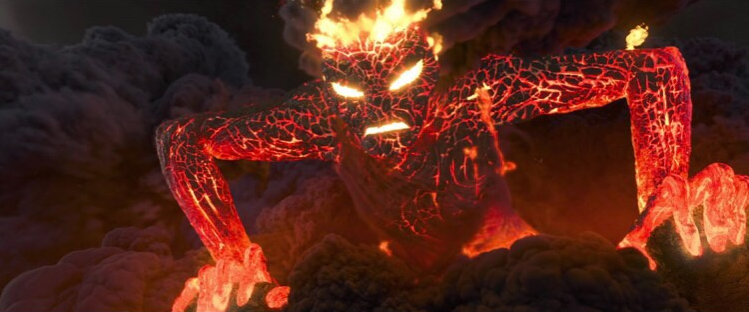
The next stop on our Lin-Manuela Anti-Villain tour is Moana. If you really think about it, there can only be two contenders for the anti-villain in this movie. The first is Maui. While he did steal the heart, we find out that his intentions were only to help the humans and he redeems himself later on by helping Moana return the heart. This makes him more of an anti-hero than an anti-villain, in my opinion. This leaves Te Ka. Te Ka, the lava monster who was described as also power-hungry for the heart, is actually Te Fiti, the goddess whose heart was stolen. Without her heart, Te Fiti turns into Te Ka and even though others may see her as a violent power-hungry monster, she is actually trying to get her heart back from those who may misuse it. However, just like the characters in the movie, we as audience members do not know this fact until the very end of the movie, so Te Ka becomes a looming force throughout the story. Because of this, I decided Te Ka fits the anti-villain persona more than Maui, particularly the tropes “Good Turned Bad” and “The Scapegoat.” The first is obvious; without her heart, Te Fiti turns “evil” and starts attacking anyone who has the heart in order to get it back. The second goes hand in hand with the first; once we find out that Te Ka was Te Fiti all along and see that her intentions were misunderstood.

If you have watched all of these movies and plays by Lin-Manuel Miranda that I mentioned near the beginning of this post, you are probably the most curious about how I am going to tackle In the Heights. I’m going to cut right to the chase: there is no villain or anti-villain for the overarching story within this movie. The antagonist is just the fears and struggles of the characters accelerated by the heat wave and the blackout in their tight-knit neighborhood. You can’t have an anti-villain or even an anti-hero without an actual character to attach it to. However, one of the plotlines that this movie presents can be examined with this lens: Nina’s conflict with her father, Kevin Rosario. While he is not a main antagonist in the story as a whole, Kevin becomes one for Nina. She wants to drop out of college because she doesn’t feel welcomed there and has dealing with discrimination since her first day on campus, failing to feel a sense of community there. Additionally, she knows that the expenses are hurting her father’s business. With all these factors in her mind, Nina lies to her father about missing the deadline to pay for tuition. Kevin then reaches out to the college to find that what she told him wasn’t true, sells off his business to pay for her next semester, and doesn’t tell her until after the deed has been done. When Nina finds out, she’s angry at him for doing that behind her back when she had found comfort in the fact that she wasn’t returning to school. This makes Kevin Rosario “The Believer” anti-villain in Nina’s plotline. He saw his actions as the right even though it was against everything Nina voiced to him. She now feels as if she is a burden to him since he has lost the business to pay tuition at a school she feels no sense of belonging in. In the end, they do come to an agreement and she decides to go back to college, but for a big chunk of the movie, Kevin fits the trope of an anti-villain.

Last but not least is the movie Encanto, whose anti-villain is highly controversial to fans: Abuela Alma. During the movie’s introduction, audience members learn of Abuela’s tragic backstory of losing her home and her husband. In her anguish, she receives a magical candle that created the Encanto and the Casita where they all now live together. The magic candle starts to bestow gifts on the Madrigal children and grandchildren until Mirabel who is not given one. Since then, Abuela is unusually harsh on Mirabel and her attempts to be helpful to the family in the eyes of her grandmother. After her cousin receives his gift, Mirabel seems to notice that the candle is losing its power and goes on an adventure to save it. Throughout the story, we learn that Abuela has actually been extremely demanding to every one of the Madrigals in different ways, causing them to constantly strive to live up to her ideals. In the climax of the story, Abuela blames Mirabel for the candle losing its power while Mirabel blames her grandmother’s high expectations of them all. This split causes the candle to die and go out. The two come together and Abuela elaborates more on her relationship with her husband and what led them to the growing amount of pressure she places on her family, allowing Mirabel to understand all the trauma she has been through and Abuela to see that her actions need to change. With all this in mind, Abuela lands herself in “The Sympathzee” and “The Believer” categories of anti-villain. We learn about her past and see the impact that it made on her to become this way while we also see how she focuses more on the community’s well-being at the expense of her family’s before her realization.
Let me Guess. Lin is Working on Another Anti-Villain Story
As I said at the start, this was simply a pattern I noticed from some of Lin-Manuel Miranda’s work. An interesting conclusion that I also came to realize while writing this blog post is that, while also being anti-villains, all of these characters are also forgiven in one way or another by the end of their stories. While the two characters created by Disney make more sense since their stories are aimed towards younger audiences, the ones Lin created that are intended for more mature viewers follow this same framework; Burr does not celebrate his slaying of Hamilton, garnering sympathy from the audience, and Kevin is forgiven by his daughter, compelling the viewers to do the same. Since he is skilled in giving his characters depth and multi-dimensionality, Lin might be sending us a message about how some of the people who we may come across in our own life stories are anti-villains that could have more to them that meets the eye, and that forgiveness is the key to a happy ending. Despite all this, I think it would be intriguing to see how Lin tackles a very one-dimensional villain character. Whether he is the creator of the story or a major player in its creation through song or production, Lin-Manuel Miranda can be certain of one of his strengths in storytelling and that is his list of redeemable anti-villains.
“Anti-Villains: Definition and Examples of Anti-Villain Tropes.” MasterClass, MasterClass, 2 Sept. 2021, https://www.masterclass.com/articles/understanding-anti-villains-in-writing.
Hamilton Broadway Grosses. BroadwayWorld. (n.d.). Retrieved 2022, from https://www.broadwayworld.com/grosses/HAMILTON
“Leslie Odom, Jr., Lin-Manuel Miranda & Original Broadway Cast of ‘Hamilton’ – The World Was Wide Enough.” Genius, https://genius.com/Leslie-odom-jr-lin-manuel-miranda-and-original-broadway-cast-of-hamilton-the-world-was-wide-enough-lyrics.
“What Is an Antihero? Definition and Examples for Writers.” MasterClass, MasterClass, 7 Dec. 2021, https://www.masterclass.com/articles/how-to-create-an-unforgettable-antihero.







Great information!!! Thanks for your wonderful informative blog.
Village Talkies a top-quality professional corporate video production company in Bangalore and also best explainer video company in Bangalore & animation video makers in Bangalore, Chennai, India & Maryland, Baltimore, USA provides Corporate & Brand films, Promotional, Marketing videos & Training videos, Product demo videos, Employee videos, Product video explainers, eLearning videos, 2d Animation, 3d Animation, Motion Graphics, Whiteboard Explainer videos Client Testimonial Videos, Video Presentation and more for all start-ups, industries, and corporate companies. From scripting to corporate video production services, explainer & 3d, 2d animation video production , our solutions are customized to your budget, timeline, and to meet the company goals and objectives. As a best video production company…